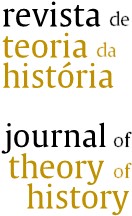A MÁSCARA DE BOI E OS MASCARADOS: PIRENÓPOLIS E O CARNAVAL EM PENTECOSTES
Palavras-chave:
Mascarados, Máscara de Boi, Pentecostes, Pirenópolis.Resumo
O campo empírico da investigação engloba a Península Ibérica, Arquipélago dos Açores e o Brasil, em busca de trançar a trajetória da máscara, desde a sua origem em Portugal, até a cidade de Pirenópolis, no estado brasileiro de Goiás. O estudo sobre as máscaras em Portugal concentrou-se na capital do Distrito de Bragança, na região de Trás-os-Montes, no Nordeste de Portugal. Enquanto no Brasil, concentrou-se mais na cidade de Pirenópolis. Essa pesquisa tem o propósito de revisitar algumas manifestações da cultura popular brasileira, tal como o boi e suas respectivas máscaras. Para tanto, recorremos ao rigor etnográfico para investigarmos o campo de atuação dessas principais celebrações no Brasil. Privilegiamos o modo dinâmico como essas manifestações ultrapassaram a dimensão ritualística, adquiriram diferentes tonalidades, com novos discursos acerca da folclorização da cultura popular tradicional, transformando-se em objetos, mercadorias ou produtos culturais para serem ofertadas ao turismo. A proposta deste artigo é demonstrar a legitimidade da máscara de boi e dos mascarados nas manifestações da religiosidade popular goiana, principalmente em Pirenópolis, na Festa do Divino que acontece em Pentecostes. Por fim, observamos que, em virtude das manifestações estarem enraizadas numa determinada localidade, a comunidade continua prestigiando sua cultura e, também, gostam das mudanças que a contemporaneidade autoriza. Alguns grupos também se apresentam em locais elitizados, dando visibilidade ao seu patrimônio cultural imaterial.
Referências
CAMPBELL. Joseph. As Máscaras de Deus?Mitologia Primitiva. Tradução de Carmen Fisher. São Paulo: Palas Athena, 2011.
CANCLINI, Néstor García. Culturas Híbridas: estratégias para entrar e sair da Modernidade. Tradução Heloísa Pezza Cintrão, Ana Regina Lessa; tradução da introdução Gênese Andrade. 4 ed. 7 reimp. São Paulo: Editora da Universidade de São Paulo, 2015. (Ensaios Latino–americanos, 1)
CHEVALIER, Jean; GHEERBRANT, Alain. Dicionário de símbolos: mitos, sonhos, costumes, gestos, formas, figuras, cores, números. Tradução de Vera da Costa e Silva etal. 4. ed. Rio de Janeiro: José Olímpio, 1991.
GIMBUTAS. Marija. Il linguaggio della Dea. Versione italiana: Selene Ballerini. Tradução de Antonella Gossi. Roma: Venexia, 2008.
GREFFE. Xavier. Arte e Mercado; [organização Teixeira Coelho]; tradução Ana Goldberger. 1 ed. São Paulo: Iluminuras; Itaú Cultural, 2013.
HOBSBAWM. Eric; RANGE. Terence. A Invenção das Tradições. Tradução de Celina Cardim Cavalcante. 3 ed. São Paulo: Paz e Terra, 2002.
LÉVI-STRAUSS. Claude. A Via das Máscaras. Lisboa: Editorial Presença, 1979.PINELO TIZA. António. Máscara e Danças Rituais?ritos ibéricos do solsticio de inverno. Lisboa: Eranos, 2013.
RAPOSO, Paulo. Por Detrás da Máscara–Ensaiode Antropología da Performance sobre os Caretos de Podence. Lisboa: IMC, 2010.
SILVA, J. C. Avelino da. O Sagrado e a individualidade: o nascimento do ser humano e a emergência da individualidade. Goiânia: Ed. da UCG, 2009.
TEIXEIRA, José Aparecido. Folclore Goiano: cancioneiro, Lendas e Superstições. 4ª edição. Goiânia: Ed. da PUC Goiás; Ed. Kelps, 2010.
TURNER, Victor. O processo ritual. Petrópolis: Ed. Vozes, 1974.
WOSIEN, Maria-Gabriele. Dança Sagrada, Deuses, mitos e ciclos. São Paulo: Triom Editora, 2002.
Downloads
Publicado
Como Citar
Edição
Seção
Licença
A Revista publica única e exclusivamente artigos inéditos. São reservados à Revista todos os direitos de veiculação e publicação dos artigos presentes no periódico.
Licensed under a Creative Commons Attribution-NonCommercial-NoDerivatives 4.0 International License



